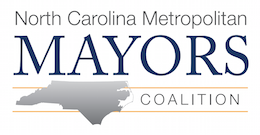LaHood Cites “Tremendous Need for Infrastructure Support” (AASHTO Journal)
Noting that a $1.5 billion discretionary grant program created by the American Recovery and Reinvestment Act drew 1,380 applications totaling nearly $57 billion in requests, U.S. Transportation Secretary Ray LaHood testified Thursday that the response demonstrates “a tremendous need” for infrastructure investment.LaHood appeared at an oversight hearing held by the House Transportation and Infrastructure Committee marking the 225th day of the recovery act, which provided $48 billion for transportation projects over two years.
A major portion of the U.S. Department of Transportation’s recovery funding has been obligated for some 8,000 highway and bridge projects, LaHood told the committee. Of the $27.1 billion provided to the Federal Highway Administration, $19.4 billion, or about 72 percent, has been obligated, he said. He also noted that projects have ranged in size from road resurfacing to a $128 million Interstate 215 widening in San Bernardino, CA, that will provide major benefits to airport access and port traffic.
The secretary cited I-215 as one of the nearly 7,000 projects located in economically distressed areas, which were identified as a priority in the recovery act. LaHood provided a state-by-state table showing that 59 percent of the highway recovery dollars obligated by Aug. 31 were in economically distressed areas.
During LaHood’s testimony, T&I Committee Chairman James Oberstar, D-MN, asked the secretary to direct FHWA to survey the states on the portfolio of the projects that are needed to upgrade highways to a state of good repair. He said that information would be valuable to the authorization legislation being drafted, which will address preservation. Oberstar said he wants to know how much of the preservation needs have been reduced by use of the recovery act’s funds, and to require each state to lay out a six-year investment plan with annual benchmarks for reporting.
LaHood also reported that 90 percent of the transit recovery grants have been awarded, amounting to 683 grants totaling $7.4 billion. The grants have enabled the purchase of 9,933 transit vehicles, with some 83 percent used to retire aging equipment. He added that states have chosen to “flex” over a quarter of a billion dollars from highway resources to fund transit projects.
Testifying on behalf of Wyoming, Department of Transportation Director John Cox explained how his state achieved top billing on Oberstar’s ranking of states’ recovery spending. Cox said 100 percent of the state’s recovery funding has been obligated and 99 percent of projects are under contract, creating some 1,739 jobs. He said the department “planned early and pushed hard” using the state’s regularly planned program to identify projects and worked closely with FHWA and contractors to get recovery projects rapidly underway.
Cox went on to stress the importance of rural transportation as part of the national program. He pointed out that states such as his “are a bridge” for freight traffic, and provide access for tourism. He also cited the importance of transporting crops and forest products, and the increasing growth of the energy industry in rural areas.
Chairman Praises Top States, Chides Those Who Have Not Spent Quickly Enough
Oberstar once again used the occasion of his oversight hearing to send letters to governors of the top five and bottom five states on his committee’s list of recovery spending progress. The committee identified Wyoming, Iowa, Maine, New Hampshire, and Oklahoma as the top five states for putting to work highway recovery dollars.
“Wyoming continues to have the best record among all states,” Oberstar wrote to Gov. Dave Freudenthal. “I expect that your state will continue to keep up the good work and serve as a model for other states around the nation. Thank you for your efforts.”
The committee listed Virginia, Massachusetts, the District of Columbia, Delaware, and Nevada as the bottom five jurisdictions for putting to work highway recovery dollars. Oberstar wrote their chief executives to urge faster implementation of recovery projects.


